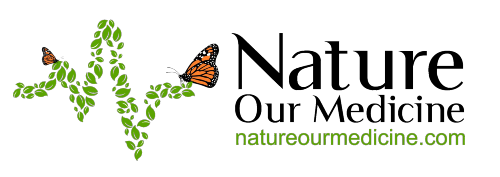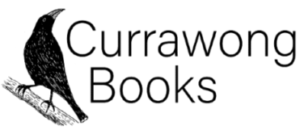An Introduction to Nature, Our Medicine

an introduction to Nature, Our Medicine an introduction to Nature, Our Medicine It may seem strange for a scientifically trained medical doctor to regard nature as medicine. Yet many years of work and study as a doctor and in advocacy for environmental protection and community change have brought me to this view. Also, time spent in remote, beautiful places has allowed me to feel for myself the profound sense of rejuvenation that comes from being deeply immersed in nature. This book brings together all I have learnt about the natural world and how it provides the wellspring of healing desperately needed right now. It also outlines the precarious and fragile state of Earth’s biome, the complex layer of life we live in. Pulling together information from scientific and medical journals, public health and other experts and translating it into a more digestible format, I hope to pique your curiosity and encourage you to deepen your relationship with nature into one of reciprocity and care. Join me on a journey, from white coats and stethoscopes to forest bathing and nature prescriptions. Nature, Our Medicine is divided into two sections. In the first, the current state of life on Earth is explored, along with the trajectory humans and nature have taken to get where we are today. A brief scientific survey of the planet’s water, soil and carbon cycles is also provided, along with how the web of plant and animal life interacts within this framework, which will support the following discussion of human health. Through this, you’ll learn all the ways nature sustains us, from stabilising our climate to providing clean air, clean water and healthy soils to grow our food. The intricate relationship between the inner-most workings of our body, our gut’s microbiome, and the wider living world highlights our dependency on nature. I hope to teach you how to nurture this internal ecosystem. Nature’s other gifts include the many medicines we draw on in today’s healthcare. There will be a focus on a few well-known agents and their surprising origins as well as promising new compounds. How protecting old-growth forests and their unique animals might hold the answer to contemporary health dilemmas like antibiotic resistance. The links between nature protection and future-proofing human wellbeing will become clear to you. Our beautiful planet also provides us with places of psychological and spiritual rejuvenation and of personal transformation. Naturally, this will be covered too. Culture and philosophy influence our relationship with nature. I will cover concepts like Gaia, systems thinking, and some First Nations’ perspectives. The First Australians have the longest continuous culture on Earth, surviving despite the ravages of colonisation. They have lived within the unique ecology of this continent for well over 60,000 years and have much to teach us about how our health sits within the wider frame of nature. Their wisdom is seeded throughout this book, alongside other First Nations’ lessons. The latter part of section one sees us turn towards the challenges for our planet and for people. How climate change and species extinction threaten human health and all life on Earth, is unpacked. This discussion will help you understand how environmental issues affect your health. Problems like pollution, pests and land clearing obviously damage nature but they ultimately hurt us too. Even infections like COVID-19 and HIV have arisen through the disruption of natural systems. We’ll step through these issues in detail, covering the ‘what’ of our current predicament. Then we’ll ponder the ‘why’ – the attitudes which have led to such widespread and sometimes callous destruction of nature. Contrasts between First Nations’ philosophies of stewardship and care and the human-centric, extractive model of the Western capitalist system are contemplated. At the end of section one, the state of today’s relationship between people and planet will be clear. The diagnosis is not good. Natural systems are unravelling with climate chaos and ecological collapse destabilising the foundations of human wellbeing. Part two focusses on health – the contemporary challenges we face and how reconnecting with nature provides a key part of the solution. Health problems fuelled by our indoor, sedentary lifestyle include obesity, diabetes, heart disease and depression. We are seeing these issues in younger and younger people along with behavioural struggles like poor sleep, attentional difficulties and anxiety. Despite great advances in our standards of living and life expectancy, many modern humans, in so-called ‘developed’ societies, are unhealthy and deeply unhappy. The environment we live in, often devoid of nature, is foreign to the world of our evolution. The COVID-19 pandemic highlighted the many vulnerabilities within our health systems and social structures and saw entire populations shut away. Many were cut off from friends and family and had no access to natural environments. The aftershocks of psychological distress are still with us and many will never be the same. Fortunately, nature-based health interventions provide simple, inexpensive answers. Discover the benefits to be had outside for your physical and mental health and for children’s learning and development. Learn how to incorporate a green hour into your day and how to write your own nature prescription. Discover the origins of shinrin-yoku (Japanese forest bathing). There is a whole world of health care out there, from surfing for autism through to Bush Adventure Therapy. As nature can provide great relief for those suffering with grief and psychological anguish, I’ve devoted a whole chapter to this topic. Slowing down and mindfully connecting with nature to grow your green mind will help you weather life’s inevitable storms. There is also a chapter focussing on children’s need to grow up within the embrace of nature. Time spent outside, engaged in nature play, can help the whole child – physically, psychologically and emotionally. In fact, this free time playing in nature is as important as a good night’s sleep and eating five serves of veggies! We can work together to restore the ecology of our world and in doing so enhance our personal wellbeing and the health of humanity globally. I
What is Nature Play?

what is nature play? what is nature play? Nature play is simply providing the time and space for children to be in nature. It is child-focused and child-led with no adult-directed outcome. Why? Because free time playing in nature supports optimal child wellbeing! For growing bodies: nature play encourages physical activity so strengthens bones, muscles and heart health. Playing on uneven natural surfaces improves balance and co-ordination. Looking up into tree canopies or out to the horizon helps eye health reducing rates of visual problems like short sightedness. For growing minds: encounters with animals and natural phenomena like puddles, rain, sunrises and rainbows foster awe and wonder. These states of fascination stimulate curiosity and a love of learning. Problem-solving, creativity and resilience are all nurtured by nature play experiences. For growing nature lovers: children who grow up with nature in their lives are more likely to care about the natural world as adults- becoming the nature stewards and environmentalists of the future. How- create time and space for all children to play in nature! Make time: nature play can start as soon as children can play on their own outside, around the age of three. Cancel an organised, adult-driven activity in your child’s current schedule and replace it with a time for nature play. Try to fit in some time for this play every day. Find green places: nature play can be in your own backyard, the nearby park or you could bring some natural objects home and have a nature play corner inside if it’s really difficult to get to a green space. Nature play uses ‘loose materials’ like sticks, leaves, flowers and stones that children can incorporate into their games as they wish. Step back: this may be the tricky bit! Adults need to step back and simply allow children to play as they wish. It might be good to offer some ‘play invitations’ like a pile of sticks or leaves to help initiate play but remember not to set a goal or desired outcome! To find out more check out the resources below or buy Nature, Our Medicine Books: The Last Child in the Woods and other books by Richard Louv The Sense Of Wonder by Rachel Carson How to Raise A Wild Child by Scott D. Sampson Online: Schools Out: Lessons from a Forest Kindergarten film directed by Lisa Molomot Project Wildthing film by David Bond- access on thewildnetwork Kids In Nature Network Photo credits:Child with leaves Photo by Janko Ferlič on UnsplashChildren with tree branches Photo by Markus Spiske on UnsplashChildren leaning against tree Photo by by Marcus Wallis on Unsplash All Post Blog Green Living Health and Wellness Nature An Introduction to Nature, Our Medicine Read More Journalling After Nature Immersion Read More Connecting to Nature Read More


